Learning how to play the piano can be a fulfilling and enriching experience, whether you’re a complete novice or looking to refine your skills. The piano is not only a versatile instrument that accommodates various music genres, but it also serves as a fantastic medium for expressing emotions through melody and harmony.
In this guide, we’ll explore effective techniques to help you navigate the world of pianism, making your experience enjoyable and rewarding as you learn to play the piano. As you embark on this musical journey, you’ll discover the joy of creating beautiful sounds while simultaneously exercising your cognitive abilities and improving hand-eye coordination.

How To Play The Piano?
Playing the piano may seem daunting at first, but it’s essentially a combination of finger dexterity, hand coordination, and the ability to read sheet music. It involves training your brain and muscles to work together in perfect harmony. With dedication and consistent practice, you’ll soon be able to play your favorite songs with ease.
Here are some steps to get you started:
Step 1: Set up your piano
Before you begin your piano journey, it’s important to ensure that your instrument is set up correctly. Position your piano in a well-lit area to avoid straining your eyes while reading sheet music.
If you’re using an acoustic piano, make sure it’s tuned to produce the correct pitch. For digital pianos, adjust the volume to a comfortable level.
Your bench height is also crucial; when sitting at the keyboard, your elbows should be at a slightly higher level than the keys to allow for comfortable movement. Ensure there’s enough space for your arms and hands to move freely while playing.
A well-organized and comfortable setup will help you focus on learning and enjoying your practice sessions.
Step 2: Locate the middle C on the keyboard
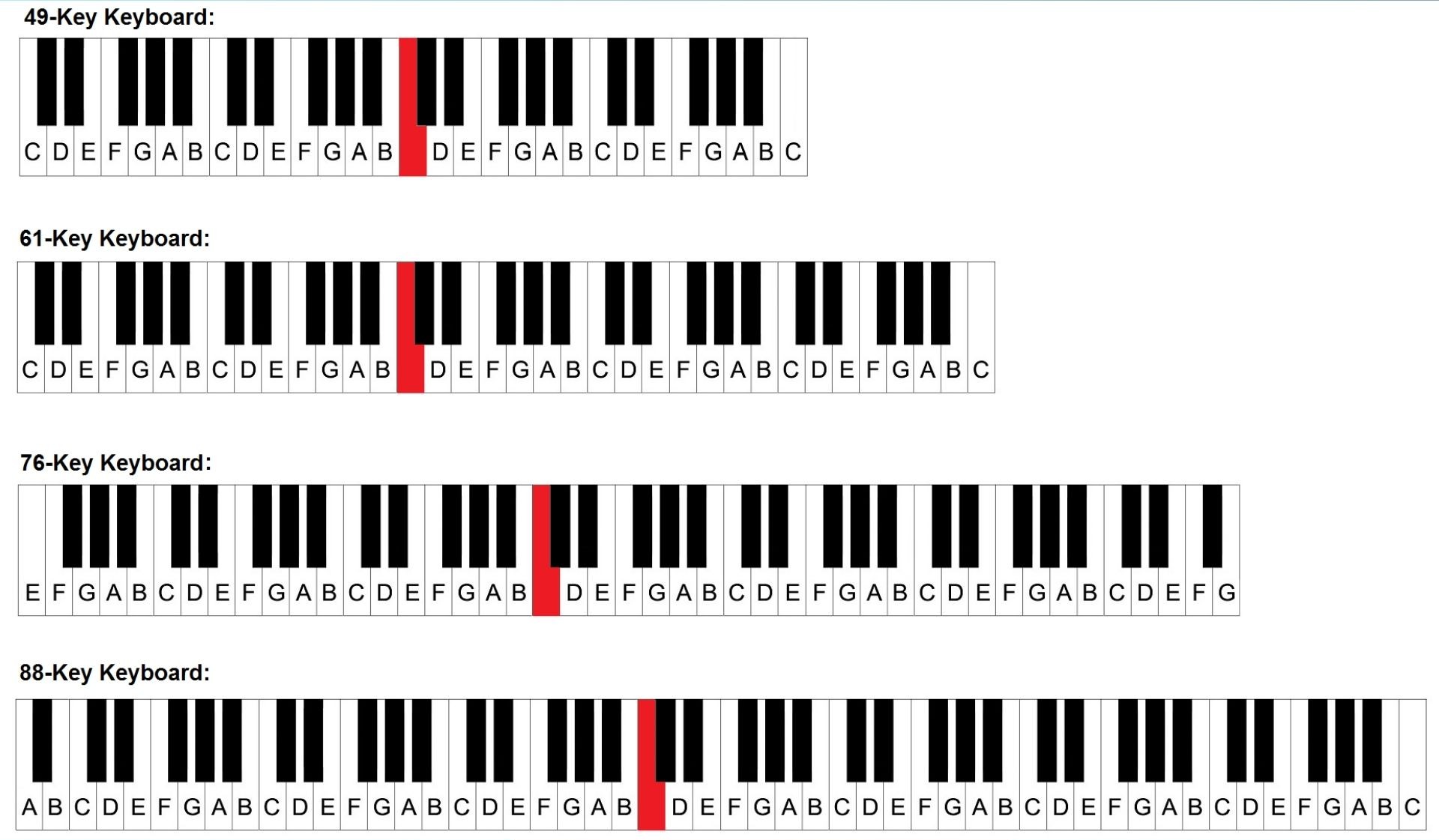
As a beginner, start by using Middle C as your reference point. It’s located in the center of the keyboard, the first white key in a group of three, flanked by two black keys.
Your right thumb should be placed on Middle C and let the other fingers rest on the white keys to its right. Press Middle C with your thumb, which is often marked as 1 in piano fingering.
Next, use your index finger (2) to play the white key immediately to the right, which is D. Your middle finger (3) will play E, your ring finger (4) will play F, and your pinky (5) will play G.
These notes form the beginning of the C Major scale.
Step 3: Use a metronome to practice the C Major scale
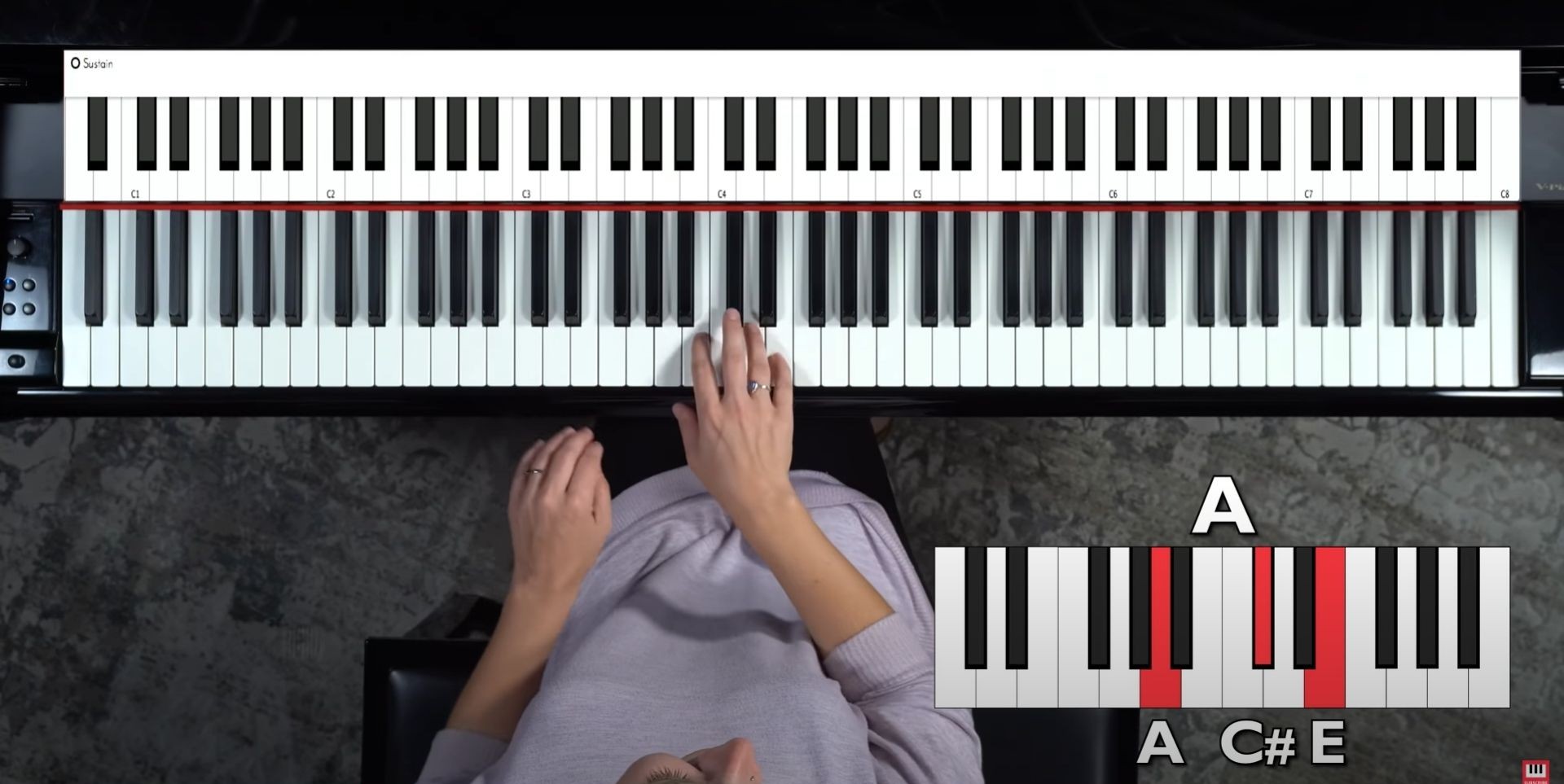
Once you are comfortable locating Middle C and the notes in the C Major scale, the next step is to practice your playing with the help of a metronome.
A metronome is a device that produces a steady beat at a selected tempo, allowing you to develop a sense of timing and rhythm. It’s an essential tool for any musician, especially beginners, as it helps you maintain a consistent pace while playing.
To start, set your metronome to a slow tempo, around 60 beats per minute (BPM). This is a manageable speed for practicing the C Major scale.
Begin by playing the scale ascending: start with Middle C (C), then D, E, F, G, A, B, and finally C again. Focus solely on producing clear and even notes rather than speed at this stage.
As you play each note, aim to do it in alignment with the metronome’s ticks. For instance, you can play one note per tick, ensuring you strike each key right on the beat. This practice will help reinforce your timing and ensure each note is played with intention.
After you have mastered the ascending scale, try practicing it in reverse — descending from the higher C back down to the Middle C. This exercise is excellent for building finger agility and accuracy.
Once you feel confident, gradually increase the metronome speed to challenge your skill. Aim to maintain clarity and evenness in your playing as the tempo rises. Remember to take breaks when needed and reflect on your progress.
Using a metronome not only aids in learning scales but also prepares you for playing more complex pieces in the future. So, consistent practice with one will enhance your overall musicianship and make your piano playing more enjoyable and polished.
Step 4: Explore other scales to understand how notes relate to each other
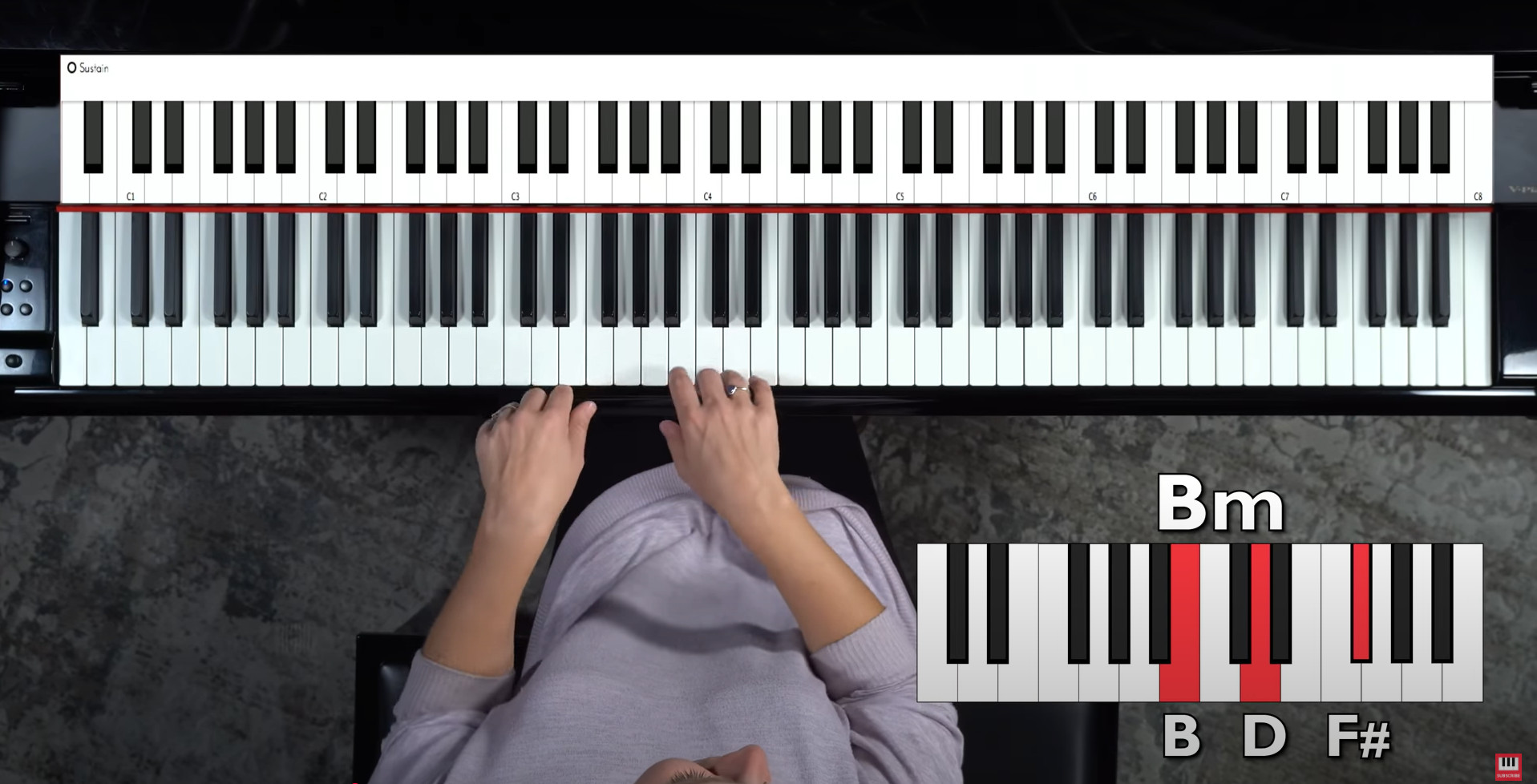
Once you feel comfortable playing the C Major scale, it’s important to explore other scales to enhance your musical understanding. Scales are the building blocks of music, and each one provides a unique sound and character.
Start by learning the G Major scale, which consists of the notes G, A, B, C, D, E, and F#. This scale introduces you to a sharp note, helping you understand how scales can vary and how notes interact.
You can also practice the F Major scale, which includes the notes F, G, A, B♭, C, D, and E. Notice how the addition of a flat changes the scale’s sound.
As you practice these scales, pay attention to the pattern of whole and half steps that define each scale. Recognizing these patterns will help you play and compose music more effectively, as you’ll develop a deeper connection with how notes work together.
Step 5: Practice playing scales with both your left and right hands

After mastering scales with your right hand, it’s essential to develop your left hand’s coordination. Playing scales with both hands simultaneously helps build strength and balance across your fingers.
Start with the C Major scale, positioning your left hand in the same manner as your right. Your left thumb (1) will begin on Middle C, followed by your index (2) on D, middle (3) on E, ring (4) on F, and pinky (5) on G.
As you practice, aim to keep both hands in sync. Begin slowly, focusing on hitting each note cleanly and evenly. Pay attention to your posture; maintain a relaxed grip and avoid tension in your arms and wrists.
If you find it difficult to play both hands together at first, practice hands separately until you’re comfortable. To increase your skill level, try playing the C Major scale in contrary motion, where one hand plays the scale ascending while the other descends. This exercise enhances finger independence and strengthens your overall coordination.
Step 6: Recognize different octaves on the piano
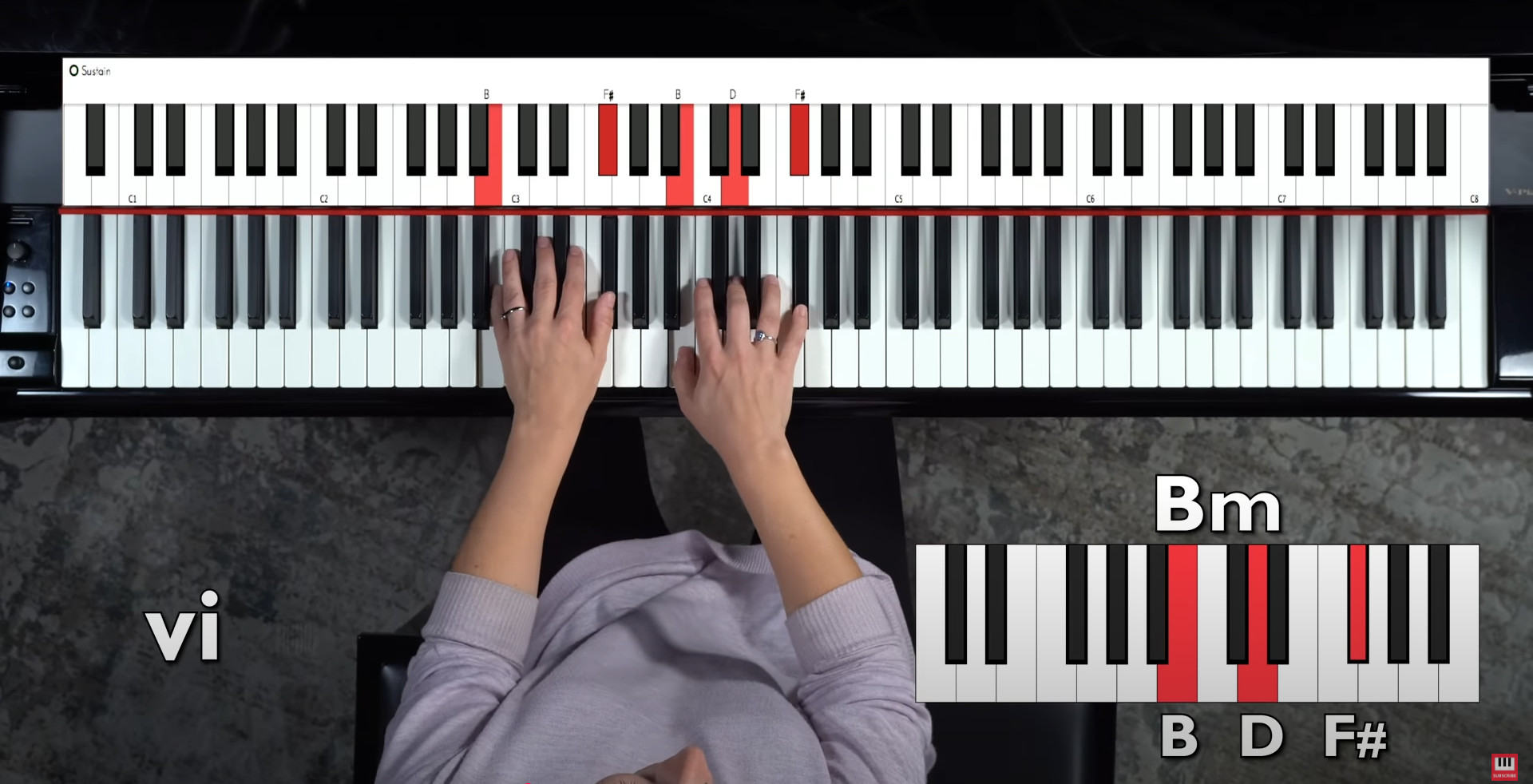
Understanding octaves is essential for developing your piano skills and enhancing your musical knowledge. An octave refers to the interval between one musical pitch and another with double its frequency. On the piano, this means that if you play a note, the note that is eight keys higher or lower is known as its octave.
For example, if you start at Middle C (C4), the next C note you encounter is C5, which is one octave higher, and C3 is one octave lower.
As you explore the piano, become familiar with how many octaves your instrument has. Most full-sized pianos contain 88 keys, spanning seven and a quarter octaves, from A0 to C8. This wide range allows you to explore different musical textures and styles.
To practice recognizing octaves, start by playing a specific key and then find the same note in different octaves. For instance, play C4, then locate C5 and C3.
Incorporating octaves into your practice can add depth and richness to your playing. For example, when playing scales or melodies, try playing the same notes in two octaves simultaneously, using both hands to create fuller sounds. This exercise helps develop your ear for music and improves your finger strength and coordination.
Gradually, as you become more comfortable, challenge yourself by playing pieces that require octave shifts, ensuring you maintain fluidity and accuracy throughout.
Step 7: Start learning how to read sheet music
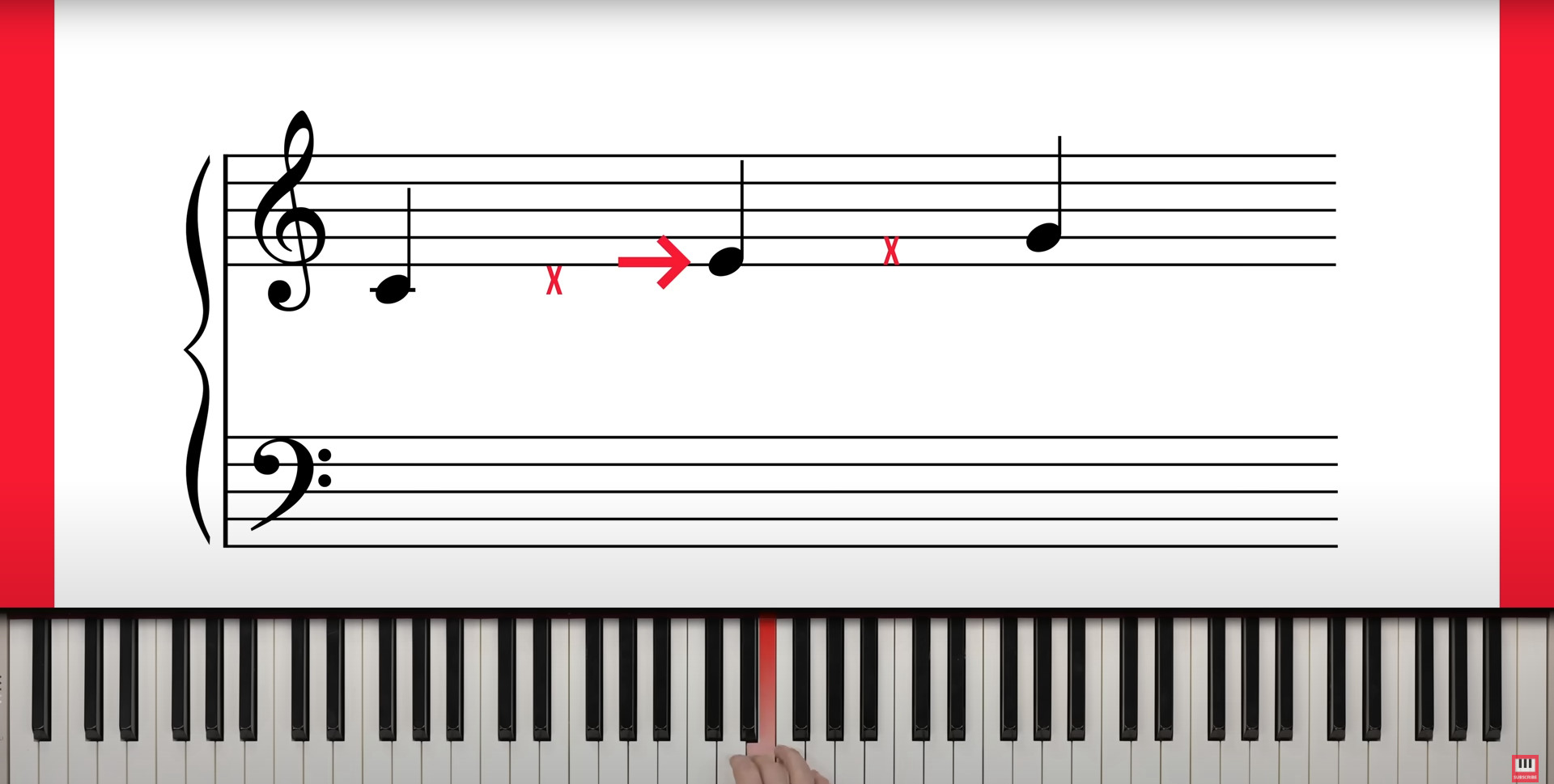
If you aren’t a talented pianist who can play by ear, you need to know how to read music to play the piano. Being able to read music helps you learn and play new pieces more quickly.
Music is written on a sheet that has 5 lines and 4 spaces, each representing a different note. To play a note, find its position on the staff.
For the treble clef (used for notes played by your right hand), the lines from bottom to top are E, G, B, D, and F, which can be remembered with “Every Good Boy Does Fine.” The spaces from bottom to top are F, A, C, and E, which spell “FACE.”
The bass clef (for notes played by your left hand) represents lower notes. The lines from bottom to top are G, B, D, F, and A, remembered with “Good Boys Do Fine Always.” The spaces from bottom to top are A, C, E, and G, which can be remembered as “All Cows Eat Grass.”
Step 8: Play a simple melody using your right hand
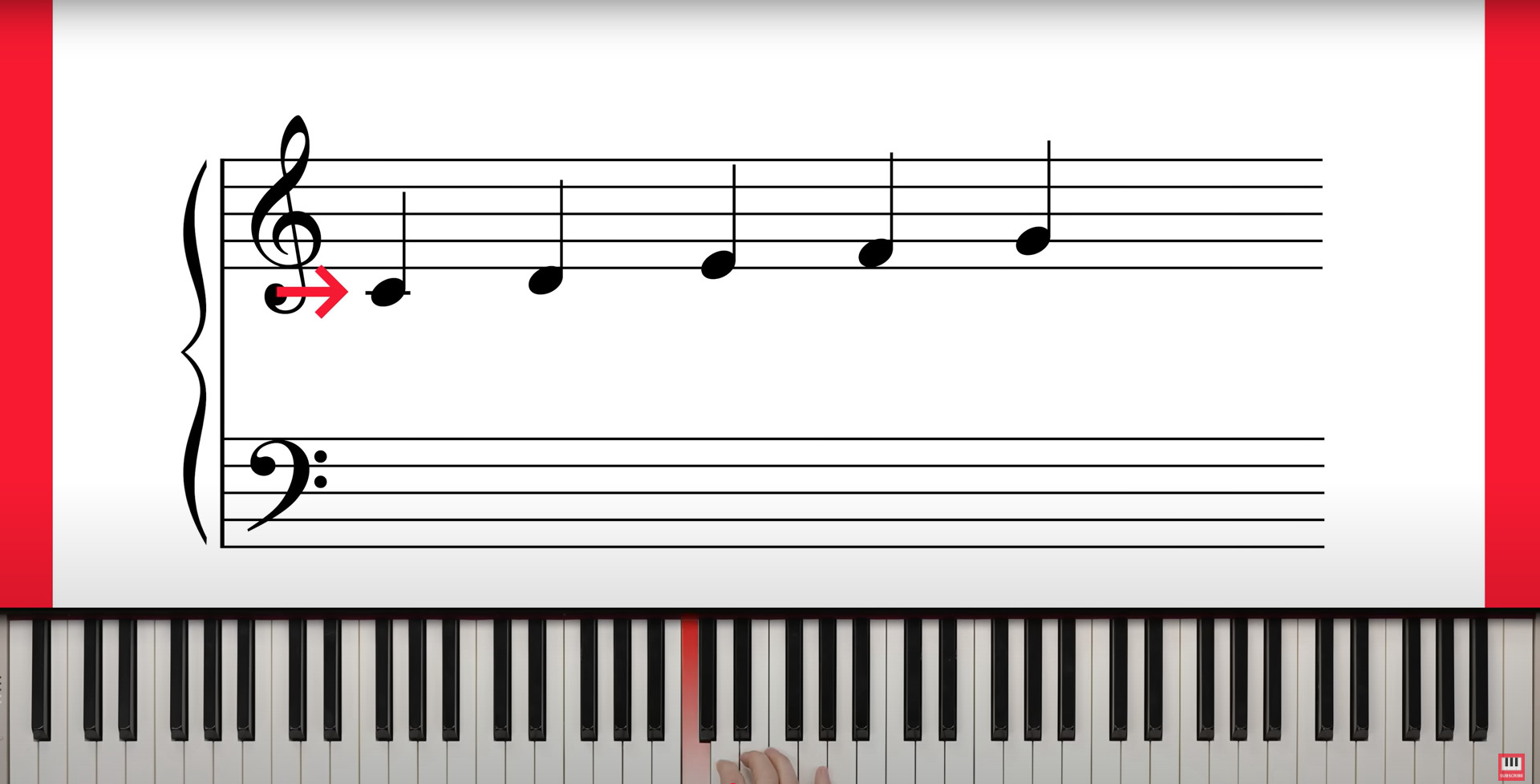
Now that you have a basic understanding of scales and how to read sheet music, you can begin playing a simple melody with your right hand. A great starter piece is “Twinkle Twinkle Little Star,” which is beginner-friendly and reinforces your finger placement.
As you play, focus on maintaining a steady tempo and ensuring each note is clear and distinct. Start slowly, gradually increasing your speed as you become more comfortable with the melody. Pay attention to your finger positioning to maintain good technique, and don’t hesitate to use a metronome if it helps keep your timing consistent.
Once you feel confident, try playing the melody with variations or adding simple harmonies to enrich your playing experience.
Step 9: Enhance your music by incorporating chords
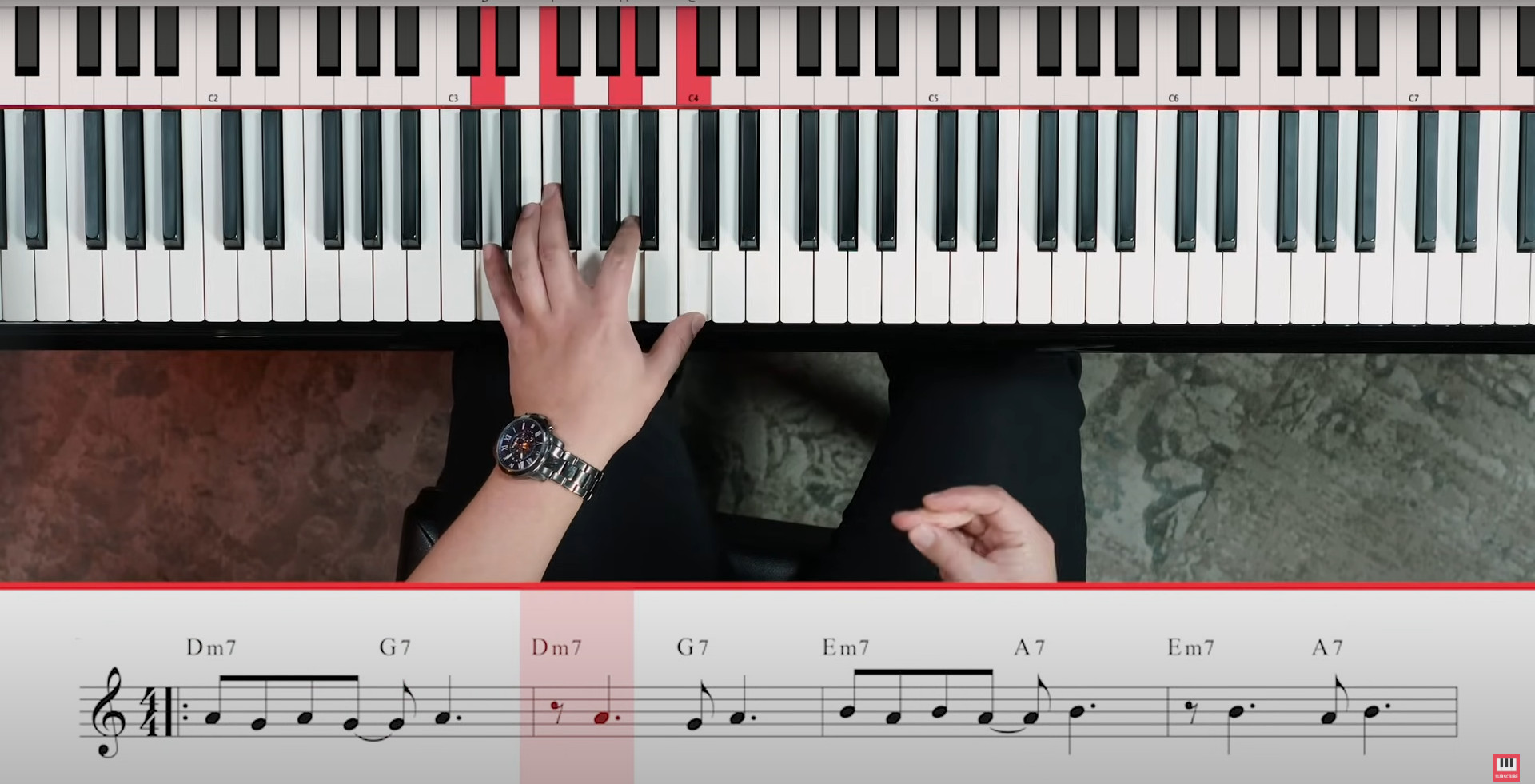
Once you’ve mastered playing simple melodies, the next step is to enhance your music by incorporating chords.
Chords are formed when two or more notes are played simultaneously, creating a fuller and richer sound. Understanding basic chord structures is essential for progressing as a pianist and enriching your playing experience.
Start with major and minor chords, which are foundational in Western music. A major chord consists of three notes: the root, the major third, and the perfect fifth. For instance, in a C major chord, the notes are C (root), E (major third), and G (perfect fifth). To play a C major chord, press down these three keys together.
Conversely, a minor chord includes the root, the minor third, and the perfect fifth. The A minor chord, for example, includes A (root), C (minor third), and E (perfect fifth).
To practice, try playing these chords in different positions on the keyboard. Begin by playing them in the root position, then experiment with inversions — changing the order of the notes while still playing the same chord. This variation allows for smoother transitions between chords when accompanying a melody.
Once you’re comfortable with major and minor chords, explore seventh chords, which add a bit more complexity and depth. The C major seventh chord includes C, E, G, and B. This chord sounds more sophisticated and can be used in various musical genres.
As you progress, experiment with different chord progressions and see how they influence the overall feel and emotion of your pieces. This practice will enhance your musicality and versatility as a pianist.
Step 10: Use Hanon exercises to improve finger strength and agility
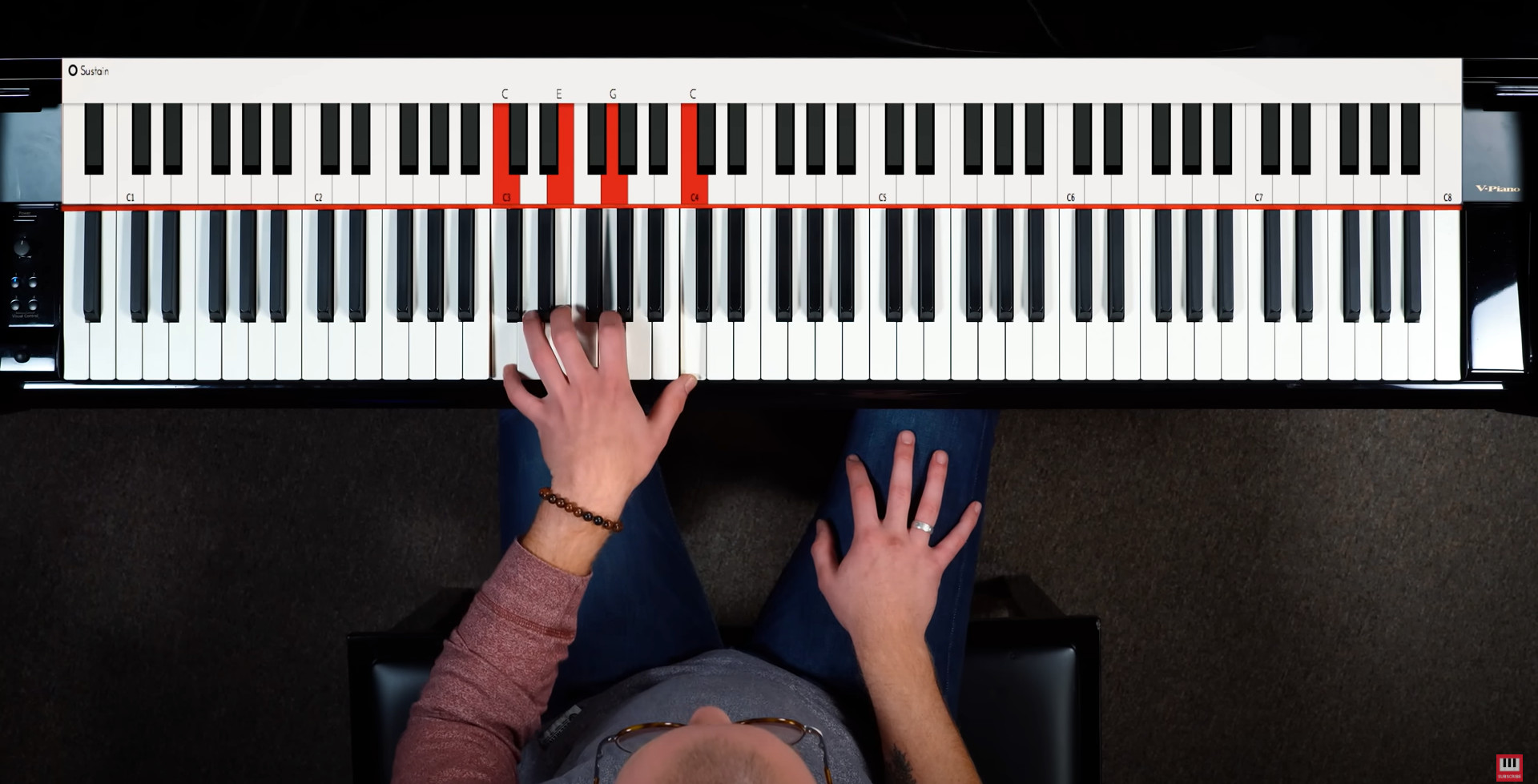
Hanon exercises are a fantastic resource for pianists looking to enhance their finger strength, agility, and overall technique.
The “Hanon: The Virtuoso Pianist” is a collection of exercises specifically designed to develop finger independence and precision. These exercises focus on various finger patterns that will help build muscle memory and improve your fluidity when playing.
To begin, select a few exercises, such as Exercise No. 1, which emphasizes repeating a specific finger pattern across all keys. Start at a slow tempo, ensuring each note is played cleanly and evenly. As you gain confidence and speed, gradually increase the tempo while maintaining clarity.
Incorporating these exercises into your daily practice routine will not only strengthen your fingers but also enhance coordination and dexterity. Aim to practice Hanon exercises for at least 10 to 15 minutes each session, and don’t forget to periodically vary the dynamics and articulation to make the practice more engaging and productive.
Conclusion
In conclusion, learning how to play the piano is a journey that requires patience, dedication, and consistent practice. By following these steps and incorporating them into your daily routine, you’ll be well on your way to becoming a proficient pianist.
Remember to start slow, focus on proper technique, and never give up — with time and effort, you will see improvement in your playing ability. Happy practicing!

